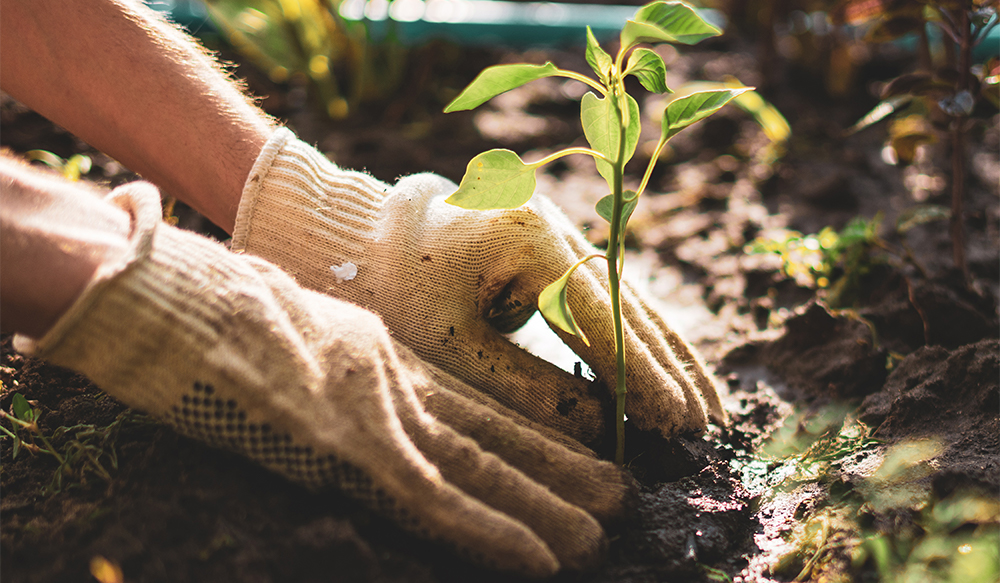
In the age of thriving farm-to-table restaurant scenes and bustling farmers markets, many of us are interested in becoming more locally minded eaters. One way to take your locavore diet up a notch is to grow your own fresh produce, and Americans are catching on to the perks of gardening. In fact, research indicates that 35 percent of U.S. households now grow food either at home or in a community garden — a 200 percent increase in less than a decade.
Benefits of Gardening
Growing your own fresh produce at home has a slew of perks, including:
- An increased sense of connectedness to what you eat. This is even more significant if you’re a parent to young children, because research shows that gardening positively impacts children’s attitudes toward, preferences for, and willingness to taste veggies.
- Saving money. There’s a reason why it’s been said that growing your own food is like printing your own money: A garden of fresh produce can be the gift that keeps on giving, making it a more affordable option to buying organic and locally sourced food.
- Reduced environmental impact. Growing your own fresh produce is also a great way to minimize your environmental impact, in part because it reduces the energy costs associated with transporting food.
- Increased time outdoors. Gardening outdoors also presents the opportunity to get fresh air and be more active outside.
How to Get Started
If you’ve ever wanted to start a garden but are overwhelmed by the thought of it, growing your own food may be easier than you think. Follow our tips to get you started, and before you know it, you’ll be marveling at your bounty of fresh produce.
Determine What Type of Garden You’ll Have
First, you need to choose the type of garden you want to have. Identify any gardening challenges that you’re facing, and consider the areas that you have available to decide whether you’re going to plant an indoor or outdoor garden.
Even if you’re limited on space, there’s no shortage of clever small garden ideas, such as growing vertically by creating trellises. A few of the more unconventional garden ideas include:
Raised Garden Bed
One option is to create a raised garden bed — an above-ground planting container that is filled with soil and plants. Raised beds are great for small spaces because they keep the garden more contained than a conventional row garden.
Check out this tutorial on how to build a raised garden bed for less than $15.
Patio/Balcony Garden
This space-saving garden idea is perfect if you don’t have backyard space available. There are many ways to create a patio garden, including by suspending the garden via terra-cotta pots, using a ladder as a garden showcase, or creating a vertical crate garden. There are also a variety of garden box options out there that enable gardeners to easily grow their own fresh produce on patios and balconies, such as EarthBox gardening systems.
Indoor Windowsill Herb Garden
If you aren’t ready for a deep dive into gardening just yet, an herb garden might be right up your alley. Herb gardens usually require minimal care, and you can use your fresh herbs to add flavor to your mealtimes.
Learn more about how to successfully grow a windowsill herb garden.
Indoor Growing Apparatus
Indoor garden contraptions, such as an AeroGarden, are growing in popularity for their convenience and ease of use. These gadgets make gardening easy with features such as grow lights that help your plants grow no matter where they’re located, hydroponic methods that use water instead of soil (less mess!), and even automatic watering options.
Decide What You Want to Grow
When you know what type of garden you’re going to plant, decide what you’d like to grow. Think about what fresh produce you routinely buy. Growing some of your favorite fruits, veggies and herbs will save you money in the long run and put the fruits of your labor to good use.
Some low-maintenance veggies to grow include:
- Tomatoes
- Beets
- Carrots
- Radishes
- Cucumbers
- Leaf lettuce
And here are four easy herbs to plant:
- Chives
- Oregano
- Spearmint
- Basil
What You’ll Need
Ultimately, the type of garden that you start will determine exactly what you need, but below are some of the basics.
Equipment
Here are five of the top outdoor gardening tools:
- Hose or watering can to keep your plants hydrated and healthy
- Garden rake for creating level soil and removing unwanted weeds
- Angled shovel to make tasks like moving soil and relocating plants easier
- Pruning shears for cutting back unruly plants
- Trowel for everyday gardening tasks, such as digging small holes and breaking up clumps of soil
Choose Your Plants or Seeds
When you know what you’d like to grow, purchase your plants or seeds. Buying seeds will take more work than nabbing an already budding plant, but it’s usually the more affordable way to go.
A few types of crops that grow easily from seeds include:
- Arugula
- Basil
- Spinach
- Peas
- Turnips
Soil and Fertilizer
Good soil is the foundation for healthy plants. If you’re creating an outdoor garden, most soil can be mixed with fertilizer to build a strong garden foundation. Consulting with a local gardening center to help you determine how much organic material and soil is optimal is also an option.
Know When to Plant
Understanding the best times to plant is important, because different crops have different growing preferences. Do your research to determine the best timing for what you’re planting. For instance, cool-season crops include kale and spinach, while warm-season crops include eggplant, corn and tomatoes. Growing guides are available at many local garden centers for reference.
Helpful Tips and Tricks
When your garden is up and running, you may find the following resources to be helpful:
- 7 Organic Pest Control Methods to Adopt in Your Vegetable Garden
- Natural Weed Killers
- 19 Gardening Hacks That’ll Make You Say “I Wish I’d Known About These” (Who knew that setting out a dish of beer can capture the slugs that have been wreaking havoc on your garden?)
- Keeping Animal Pests out of Your Garden
Now that you’ll be growing your own fresh produce, learn how to store the fruits of your gardening labors with Feeding Westchester’s “Food Dating Guide.” In addition to recommendations for how long it’s safe to consume various foods, it also covers exactly what a number of varying food packaging dates and terms mean.







